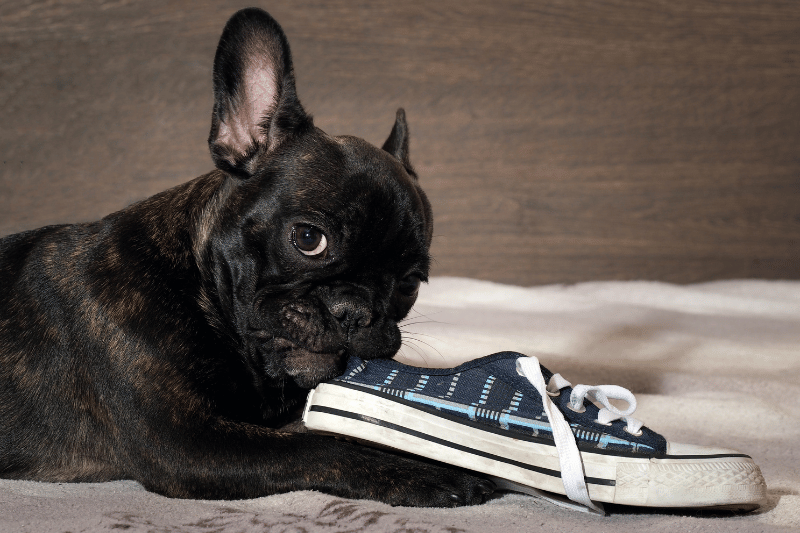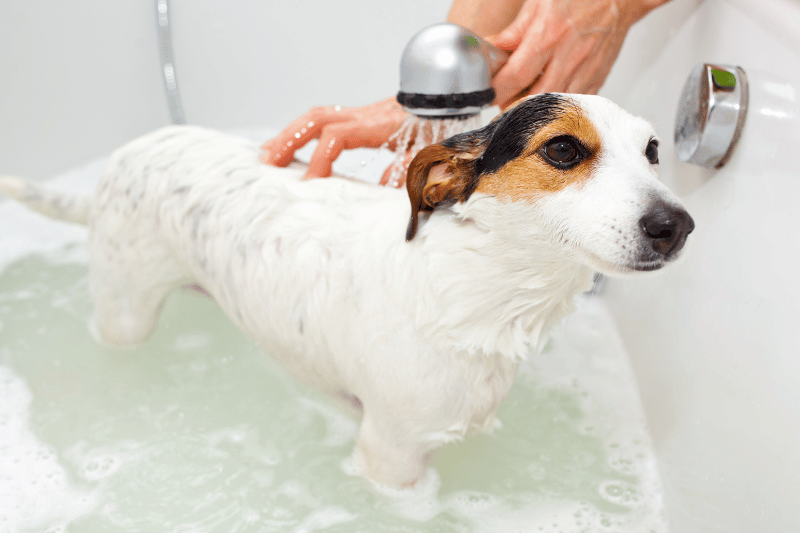The Exciting Journey of Puppy Parenthood
Bringing a new puppy home is like welcoming a furry tornado of joy, love, and unpredictability into your life. Whether you’re a solo dweller or part of a bustling family with children, this comprehensive guide will transform your home into a puppy paradise while keeping both your sanity and your new companion safe.
Why Proper Preparation Matters
Imagine your puppy as a tiny, adorable detective constantly investigating every corner of your home. Without proper preparation, this investigation can lead to:
- Destroyed furniture
- Potential health risks
- Unnecessary stress for you and your puppy
- Costly repairs
- Behavioral challenges

Understanding Puppy Development: The First 12 Months
Understanding your puppy’s developmental stages is like holding a roadmap to their physical, emotional, and behavioral evolution. Each phase presents unique challenges and opportunities, transforming a tiny, curious ball of fur into a well-adjusted, confident adult dog.
This section delves deep into the intricate world of puppy development, breaking down the complex biological, psychological, and social changes that occur during the first 12 months of a dog’s life. By comprehending these critical stages, you’ll be better prepared to provide the right support, training, and environment that nurtures your puppy’s potential.
From the exploratory weeks of early puppyhood to the rebellious teenage months, each developmental stage is a crucial building block in shaping your dog’s personality, behavior, and future relationship with you and the world around them.
Developmental Stages Overview
1- 8-16 Weeks: The Exploration Phase
- Highest curiosity level
- Maximum learning potential
- Critical socialization window
- Teething begins
2- 4-6 Months: The Teenage Rebellion
- Increased independence
- Hormonal changes
- Testing boundaries
- Intense chewing phase
3- 6-12 Months: The Adolescent Challenge
- Establishing dominance
- High energy periods
- Continued training crucial
- Sexual maturity approaching
Blueprint for a Puppy-Friendly Home: Strategic Preparation and Safety Protocols
Your home is about to transform from a personal living space to a dynamic, puppy-centered environment. Preparing your living space is not just about preventing destruction—it’s about creating a safe, stimulating, and loving habitat that supports your puppy’s physical and emotional development.
This comprehensive section goes beyond basic puppy-proofing. We’ll explore room-by-room strategies that consider both physical safety and psychological well-being, helping you anticipate and mitigate potential risks while fostering an environment of exploration, learning, and comfort.
By understanding how to strategically adapt each area of your home, you’ll minimize stress for both you and your puppy, setting the foundation for a harmonious, joyful coexistence.
Room-by-Room Puppy-Proofing
Living Room
- Secure loose electrical cords
- Remove fragile decorations
- Use baby gates
- Create a designated puppy zone
Kitchen Safety
- Install child-proof cabinet locks
- Secure trash cans
- Remove toxic plants
- Store cleaning chemicals high
Bedroom Protection
- Use closed hampers
- Protect electrical cords
- Store shoes and clothing safely
- Consider crate training area
Bathroom Precautions
- Keep toilet lid closed
- Store medications securely
- Remove bath mats
- Use cabinet locks

The Ultimate Puppy Supplies Guide: Investing in Your Companion’s Comfort and Development
Selecting the right supplies for your new puppy is more than a shopping expedition—it’s a critical investment in their health, happiness, and future development. This meticulously curated guide walks you through essential and recommended supplies, helping you make informed decisions that balance quality, functionality, and budget.
We’ll explore not just what to buy, but why each item matters, how it contributes to your puppy’s well-being, and how to select products that will grow and adapt with your rapidly changing companion.
Absolute Must-Haves
- Crate: Size-appropriate, comfortable
- Bed: Washable, cozy
- Collar and Leash: Adjustable
- Food and Water Bowls: Stainless steel recommended
- Identification Tags
Recommended Supplies
- Variety of chew toys
- Enzymatic cleaning products
- Puppy pads Grooming tools
- Training treats First-aid kit
Safety Protocols: Preventing Potential Hazards
Toxic Substances to Eliminate
Household Chemicals
- Cleaning solutions
- Antifreeze
- Pesticides
- Paint
- Medications
Dangerous Plants
- Lilies
- Sago
- Palm
- Azaleas
- Tulips
- Daffodils
Physical Safety Measures
- Install baby gates
- Block stairways
- Remove small objects
- Secure trash areas
- Cover electrical outlets
Install baby gates Block stairways Remove small objects Secure trash areas Cover electrical outlets
Early Training Strategies
- Establish consistent routine
- Use positive reinforcement
- Short, frequent training sessions
- Patience is key
Socialization Techniques
- Gradual environmental exposure
- Controlled interactions
- Puppy classes
- Diverse sound experiences
Don’t worry, we have a complete guide on how to train a puppy here!

Emotional Preparation: Managing Expectations
Bringing a puppy home is a profound emotional and financial commitment that extends far beyond the initial excitement of adoption. This section provides a transparent, comprehensive look at the true investment of puppy parenthood, preparing you for both the heartwarming moments and the practical challenges ahead.
For Solo Owners
- Adjust work schedule
- Arrange dog walking/daycare
- Create support network
- Mental health preparation
For Families with Children
- Teach child-puppy interaction
- Supervise all interactions
- Assign age-appropriate responsibilities
- Create family training plan
Financial Considerations
We’ll break down the financial landscape of dog ownership, offering strategic insights into budgeting, unexpected expenses, and long-term planning. Simultaneously, we’ll explore the emotional journey of integrating a puppy into your life, whether you’re navigating this adventure solo or as part of a family.
Initial Costs
- Adoption/Purchase: $50-$2000
- Initial Veterinary Checkup: $100-$300
- Supplies: $200-$500
- First-Year Expenses: $1000-$2000
Ongoing Expenses
- Food: $20-$100/month
- Veterinary Care: $200-$800/year
- Training: $50-$200/session
- Grooming: $30-$90/session
- Pet Insurance: $20-$50/month

Tailored Puppy Integration: Strategies for Diverse Living Environments and Family Dynamics
No two puppy adoption journeys are identical. This section acknowledges the beautiful diversity of living situations and family structures, offering nuanced, adaptable strategies that recognize the unique challenges and opportunities presented by different environments.
Whether you’re navigating a compact urban apartment, managing a bustling household with children, or creating a harmonious multi-pet home, we’ll provide targeted insights that help you customize your approach. These scenario-specific preparations ensure that your puppy’s integration is smooth, supportive, and aligned with your specific lifestyle.
Apartment Living
- Choose smaller breed
- Regular outdoor activities
- Noise considerations
- Elevator/stairs training
House with Yard
- Secure fencing
- Designated potty area
- Shade and water availability
- Safe outdoor exploration
Potential Challenges and Solutions
The first weeks of puppy ownership are simultaneously magical and challenging. This section serves as your strategic playbook, transforming potential obstacles into opportunities for growth, bonding, and understanding.
We’ll dissect the most common first-week challenges with surgical precision, offering not just solutions, but deep insights into the underlying behavioral and emotional dynamics. By understanding the ‘why’ behind challenges like nighttime crying, house training struggles, and separation anxiety, you’ll be equipped to address root causes with empathy, patience, and effectiveness.
Common First-Week Challenges
1- Crying at Night
- Comfort items
- Consistent bedtime routine
- Gradual separation training
2- House Training
- Frequent bathroom breaks
- Positive reinforcement
- Consistent schedule Patience
3- Separation Anxiety
- Gradual alone time
- Comfort items Background noise
- Short departures initially
Your Puppy, Your Adventure
Preparing for a new puppy is more than a checklist—it’s creating a loving, safe environment for a new family member. Every challenge is an opportunity to bond, every mess a chance to laugh, and every moment a step in your shared journey.
Best Tips
- Stay patient
- Enjoy the process
- Seek professional advice when needed
- Embrace the chaos
Your puppy isn’t just a pet. They’re family.


